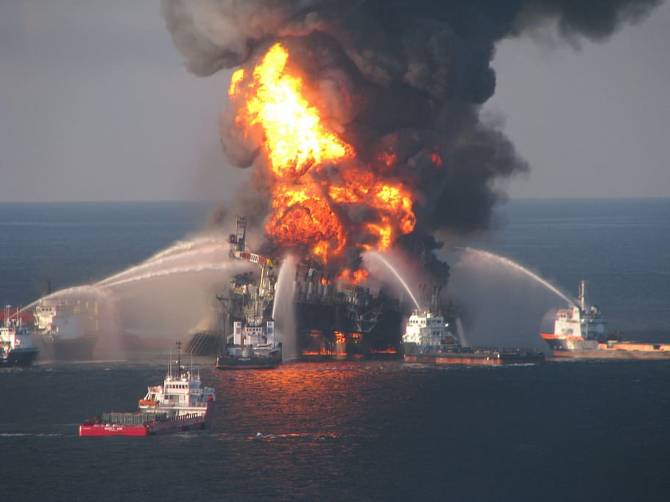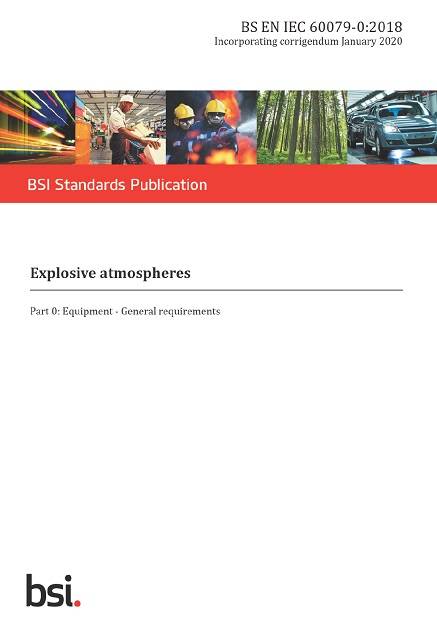Electrical equipment in flammable and explosive atmospheres
Introduction
As identified in the Electriciy at Work Regulations 1989, the utilisation of any source of electricity may result in arcing or sparks in both normal operational and fault conditions. Where the electrical installation is to be design for use in a location with combustible or explosive stored materials or it is made of combustible constructional materials, the event of arcs, sparks or materials reaching high surface temperatures may result in explosion or fire causing risk to life and great economic loss.
Electricity at Work Regulations 1989
Regulation 6
Electrical equipment which may reasonably foreseeably be exposed to-
- mechanical damage
- the effects of the weather, natural hazards, temperature or pressure
- the effects of wet, dirty, dusty or corrosive conditions; or
- any flammable or explosive substance, including dusts, vapours or gases, shall be of such construction or as necessary protected as to prevent, so far as is reasonably practicable, danger arising from such exposure.
Great efforts are made over time to understand these risks and engineer solutions to prevent them as when they do happen they can be catastrophic in nature. Two well known and documented examples of these tragic incidents would be the Piper Alpha oil rig and Flixborough disaster.

The main legislation dealing with this topic is the Dangerous Substances and Explosive Atmosphere Regulations 2002 (DSEAR). This legislation deals with the risks arising from a wide range of dangerous substances, including flammable solids, liquids, gases and aerosols; self reactive subtances/mixtures; and oxidising solids and liquids.
The Dangerous Substances and Explosive Atmosphere Regulations 2002 (DSEAR)
In Great Britain, these regulations transpose into law two directives: the safety aspects of the Chemical Agents Directive 98/24/EC (CAD) and teh European Atmosphere Directive 99/92/EC (ATEX). The regulations place duty on employers and the self-employed to protective from risks against fire, explosion and similar events arising from dangerous substances used or present in the worklpace.
The dangerous substances covered by the regulations include solvents, paints, varnishes, flammable gases, liquified pertoluem gas (LPG), dusts from machining and sanding operations and dusts from foodstuffs. These all have the potential to create an explosive atmosphere when mixed with air, which migth catch fire or explode in the presence of an ignition source. The types of work activities covered include, but are not limited to:
- storage of petrol as a fuel for cars, boats or horticultural machinery
- use of flammable gases, such as acetylene, for welding
- handling and storage of waste dusts in a range of manufacturing industries
- handling and storage of flammable wastes such as fuel oils
- welding or other ‘hot work’ on tanks and drums that have contained flammable material
- work that could release naturally occurring flammable substances such as methane in coalmines or at landfill sites
- use of flammable solvents in laboratories
- storage and display of flammable goods, such as paints, in shops
- filling, storing and handling aerosols with flammable propellants such as LPG
- transporting flammable substances in containers around a workplace
- deliveries from road tankers, such as petrol and bulk powders
- chemical manufacturing, processing and warehousing
- the petrochemical industry, both onshore and offshore
- handling, storage and use of gases under pressure
- handling, storage and use of substances corrosive to metal.
The regulations require duty holders, in decreasing order of preference, to take measures to protect the health and safety of thier employees by preventing the formation of explosive atmospheres, by avoiding the ignition of explosive atmospheres and by mitigating the effects of an explosion such as by providing explosion relief and PPE for personnel.
The main concern from an electrical safety perspective is to recognise electricity as an ignition source. This is why even 9 V batteries also come within the reach of the Electricity at Work Regulations. Electricity can be a source of ignition through standard operating conditions, fault conditions, overheating and electrostatic discharge, so the selection of electrical equipment must consider the exclusion of equipment from these hazardous areas. Onbly equipment and protective systems that meet the requirements of the Equipment and Protective Systems Intended for Use in Potentially Explosive Atmospheres Regulations 1996 (EPS) should be used and installed.
Such equipment will be CE marked and, in Europe, carry the following Ex symbol:

Equipment and protective systems in use before July 2003 can continue to be used, provided the risk assessment shows it is safe to do so.
What are dangerous substances?
Dangerous substances are substances or mixtures of substances (called 'preparations' in DSEAR) that could create risks to people's safety from fires and explosions or similar events, such as 'thermal runaway' from chemical reactions or are corrosive to metal. Liquids, gases, vapours and dusts that may be found in a workplace can all be dangerous substances.
These can include:
- a substance or mixture which meets the criteria for classification as hazardous within any physical hazard class laid down in the CLP Regulation (classification, labelling and packaging of substances) whether or not the substance is classified under that regulation. Many dangerous substances have classifications which are agreed at EU level. These are given in Table 3.2 in part 3 of Annex VI to the EU Regulation on classification, labelling and packaging of substances and mixtures, or 'CLP' Regulation.
- any kind of dust that when spread in air to form a cloud (ie form an explosive atmosphere), can explode.
- any other substances, or mixtures of substances, which because of their physical properties and the way in which they are present in the workplace create a risk to safety from fires and explosions, but which may not be covered by CLPR. For example high flashpoint liquids present in the workplace at elevated temperatures.
Guidance
The HSE has published an ACOP titled Dangerous substances and explosive atmospheres. Dangerous substances and explosive atmospheres regulations 2002 approved code of practice and guidance.
Standards
In the UK, BS EN 60079-0:2018 Explosive atmospheres. Equipment. General requirewments, providing the general requirements for preventing gas/air and dust explosions.
This part of 60079 specifies the general requirements for construction, testing and marking of Ex Equipment and Ex Components intended for use in explosive atmospheres.
The standard atmospheric conditions (relating to the explosion characteristics of the atmosphere) under which it may be assumed that Ex Equipment can be operated are:
- temperature –20 °C to +60 °C;
- pressure 80 kPa (0,8 bar) to 110 kPa (1,1 bar); and
- air with normal oxygen content, typically 21 % v/v.

